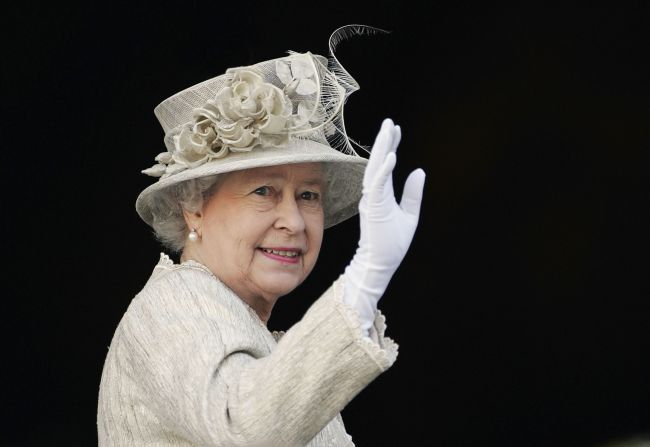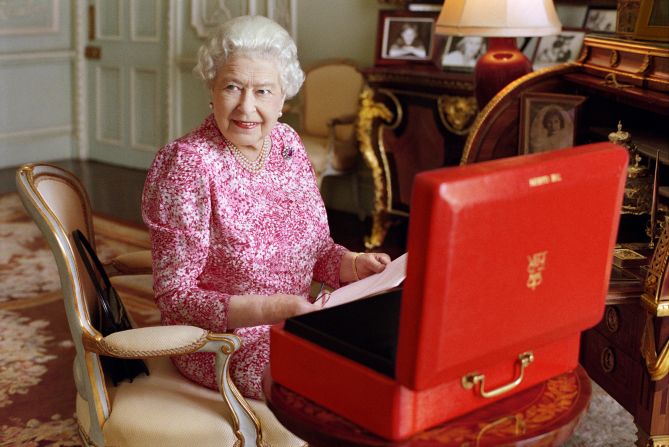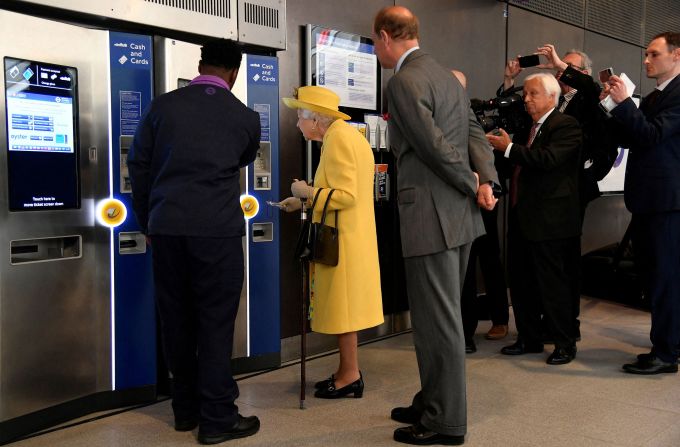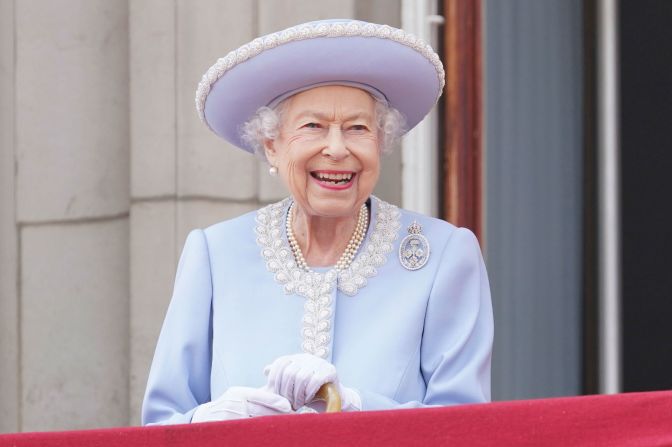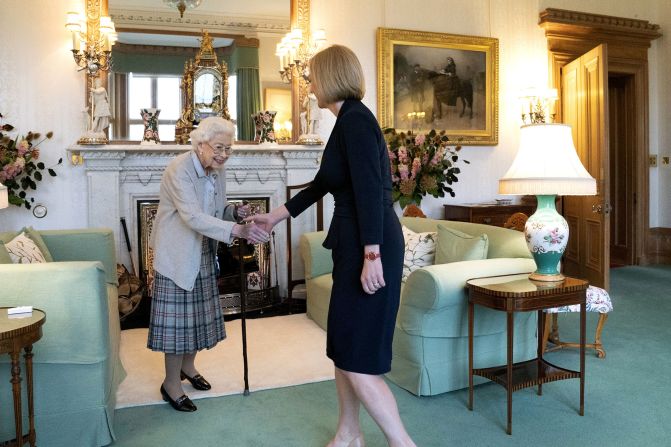Editor’s Note: Victoria Arbiter is CNN’s royal commentator. She is the daughter of Queen Elizabeth II’s former royal press secretary Dickie Arbiter. Follow her on Twitter @VictoriaArbiter. The opinions in this piece are solely hers.
Story highlights
Queen Elizabeth II to become Britain's longest reigning monarch, overtaking her great-great-grandmother, Queen Victoria
Her record-breaking rule -- 63 years and more than seven months -- has seen 12 U.S. Presidents and seven Popes in office
Now 89, she continues to carry out regular engagements; on Wednesday, she will open the Borders Railway in Scotland
Just like her great-great-grandmother Queen Victoria before her, Elizabeth II was never expected to rule; as the eldest daughter of the king’s second son, Prince Albert (later King George VI), hers was a life destined to be lived in relative privacy, until the 1936 abdication of her uncle, Edward VIII, after a reign of only 325 days, changed the course of history.
Queen Elizabeth II: The fast facts
Already the country’s longest-lived monarch and the world’s oldest-serving sovereign, at approximately 5.30 p.m. on September 9, Elizabeth will reach yet another milestone when she becomes Britain’s longest reigning monarch, breaking Victoria’s record of 63 years, seven months and two days on the throne.
Indifferent to the historical significance of the occasion, Elizabeth is not interested in competing with her ancestors.
She originally planned to spend the day privately with “no fuss” at Balmoral, but after caving to demands that she should be seen on such a momentous day, she agreed to undertake an engagement, so come Wednesday she will open the Borders Railway in Tweedbank, Scotland, the longest domestic line to be built in Britain for more than 100 years.
Elizabeth is the nation’s 40th monarch and only the sixth queen since William the Conqueror took the crown over 1,000 years ago. Her rule has seen 12 British Prime Ministers, 12 U.S. Presidents and seven Popes in office.
She is the most traveled monarch in history, having visited over 116 countries. She carries out hundreds of engagements a year, and – at the age of 89 – continues to make international state visits.
She is patron of over 600 charities and organizations, having held 400 of those posts since 1952. She has conferred over 400,000 honors and personally presided over 610 Investitures.
She has given her assent to more than 3,500 Acts of Parliament and, excluding 1959 and 1963, when she was pregnant with Andrew and Edward respectively, has attended every State Opening of Parliament.
She has granted the country a sense of continuity and stability, and she has done so with an unmatched devotion to duty.
Such an historic moment does of course lend itself to comparisons between the two queens.
Victoria’s reign spanned an age of growth and development. Elizabeth inherited a depressed post-war Britain still enduring rations and widespread hardship, a country where social classes remained distinct.
Throughout the Victorian era it was proudly professed that the sun never set on the Empire, but Elizabeth ushered in its twilight years and bore witness to decolonization across Africa and the Caribbean, thereby granting independence to hundreds of millions of citizens.
The successful and largely peaceful transition to the Commonwealth of Nations has arguably been the Queen’s crowning achievement. At the time of her accession, the voluntary organization numbered eight countries. To date it consists of 53 independent nations, many of which have chosen to retain the Queen as head of state.
Many of the greatest socio-economic changes of the 20th century, affecting both the monarchy and the public at large, have occurred during Elizabeth’s reign.
In 1952, the year of her accession, Britain was fundamentally considered a white, Christian country. It was an age in which men dominated politics and industry, and the majority of women were housewives.
Today Elizabeth’s is a culturally diverse realm in which multi-faith communities live side-by-side and women are often the primary breadwinners. An unlikely feminist role model, the Queen has held the highest position in the land for over six decades, and she has done so because of her willingness to adapt and evolve to meet the needs of an ever changing, less deferential society.
She made the “walkabout” the norm, agreed to open Buckingham Palace to the paying public for a few months of the year and embraced the world of social media. The Monarchy now has its own website and Facebook account, as well as a presence on YouTube, Flickr and Instagram.
The announcement of Prince George’s birth in July 2013 was placed on an easel in the forecourt of Buckingham Palace, as had been the tradition for previous royal babies … but not before the news was beamed around the world via Twitter.
At her directive, the Royal Family overhauled its finances and agreed to start paying income tax in 1992. In 2011 the Queen approved changes to the laws to succession, allowing first-born daughters to take precedence over younger-born brothers.
She is a monarch of numerous firsts: the first reigning British sovereign to visit Saudi Arabia (1979), China (1986) and Moscow’s Red Square (1994); the first to set foot inside a mosque, Hindu temple and the Vatican; the first to open the Canadian Parliament, to broadcast a televised Christmas address, to fly in a helicopter and the first to celebrate a Diamond Wedding Anniversary.
But it wasn’t until May 2011, aged eighty-five, that she was finally able to visit the Republic of Ireland. The four-day state visit, designed to serve as a symbol of friendship and reconciliation, was the first by a British sovereign since the bloody struggle for Irish Independence during the reign of her grandfather, George V, who last visited in 1911. She wore emerald green, spoke a little Gaelic and bowed before Dublin’s nationalist memorial in reverence to those killed in the fight for independence.
Proving her worth as an accomplished diplomat yet again, the visit received widespread praise. Through sheer stamina, consistency and commitment she has managed to win over many an ardent Republican, some of whom have declared her to be “untouchable.” Even as Scottish Nationalists looked to the 2014 referendum on independence, they vowed to keep the Queen as head of state regardless of the vote’s outcome.
With Prince Charles – Britain’s longest-serving heir apparent – waiting in the wings, the future of the British Monarchy ultimately rests in his hands and those of his successors, but Elizabeth will leave behind the single greatest blueprint of any previous sovereign, as well as a neatly-packaged monarchy for which archaic laws have been changed, hands of friendship have been extended and popularity stands at an all-time high.
Already aged 66, Charles’s reign and that of both William and George will likely be an elderly one, and so it will be imperative for each to find a way to maintain the monarchy’s relevance amidst an ever more youth obsessed culture.
But that is a story for another day – for the Queen, this record-breaking achievement is merely a milestone, not the end; she continues to carry out a full and unrelenting royal schedule.
Should she live to the same age as her mother, who died in 2002 aged 101, she will prove there is always room for one more first: Come February 6, 2022, she may just be the first British sovereign to celebrate a Platinum Jubilee.





























